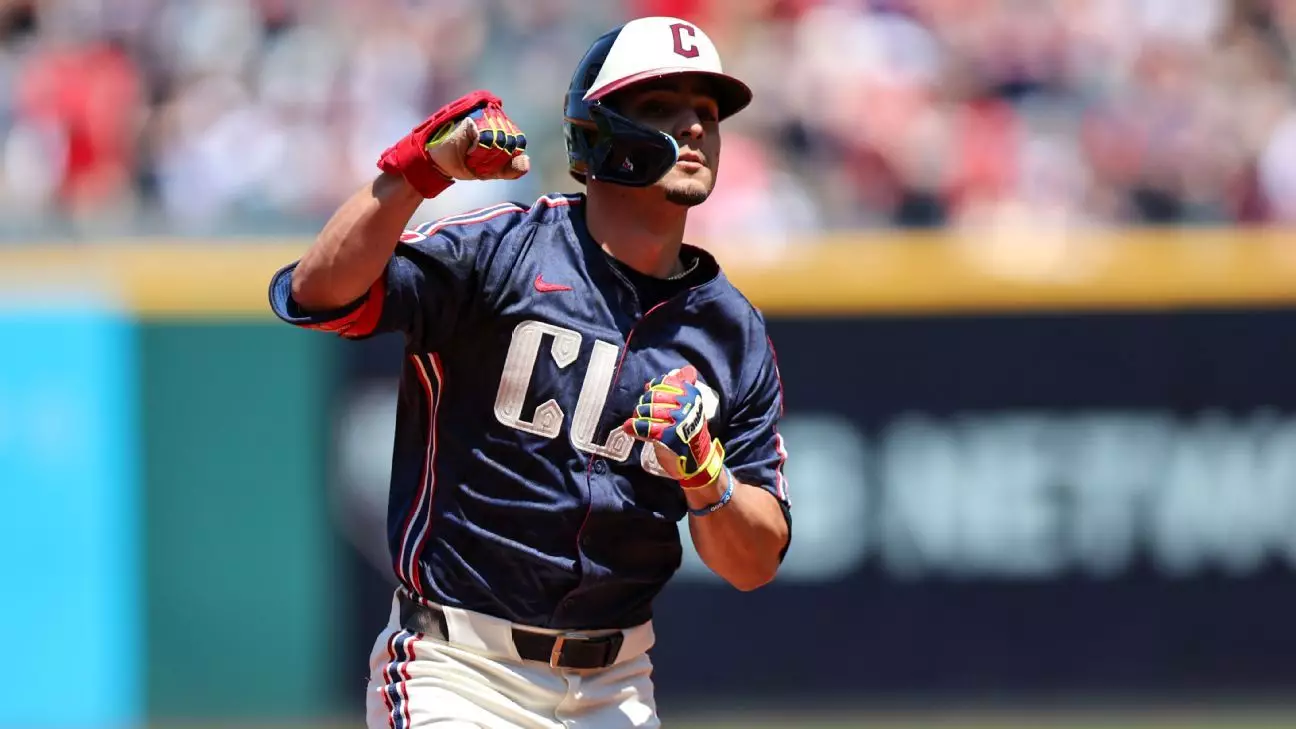The recent trade between the Toronto Blue Jays and the Cleveland Guardians marks a significant shift in strategy for both teams as they navigate the complexities of Major League Baseball (MLB) amidst increasing competitive pressure. With the Blue Jays attempting to reverse the misfortunes of a lackluster 2024 season while the Guardians reassess their roster management, this exchange of players illustrates the underlying calculations that contending teams must consider in a tight market.
On the surface, the centerpiece of this trade is undoubtedly Andrés Giménez, the All-Star second baseman who boasts a wealth of accolades including three Gold Gloves—testaments to his defensive prowess. This acquisition comes at a time when the Blue Jays are looking to strengthen their infield and provide stability alongside their star hitters. Despite a subpar offensive season with a .252 batting average and a slugging percentage of only .340, Giménez’s ability to steal bases—30 last season—adds a dynamic threat that could be particularly valuable in high-pressure situations.
The Guardians, on the other hand, received Spencer Horwitz in this transaction, only to trade him to the Pittsburgh Pirates shortly thereafter for a package including right-hander Luis Ortiz and left-handed prospects Michael Kennedy and Josh Hartle. This maneuver reflects Cleveland’s ongoing assessment of their young talent pool, which involves both retaining and trading players to enhance their future prospects. Horwitz’s solid performance in the previous season, marked by a 125 OPS+, indicates that he has potential to contribute offensively, yet the Guardians appear focused on aligning long-term pieces instead.
Following a disappointing record of 74-88 last season, the Blue Jays find themselves at a critical juncture. With key players like Vladimir Guerrero Jr. and Bo Bichette nearing free agency, the franchise’s leadership is acutely aware that they must pivot towards rebuilding while also competing. The decision to pursue Giménez can be seen as an attempt to fortify the roster against any possible setbacks related to their impending free agents. With Guerrero’s future uncertain and significant offers made (albeit unsuccessful) for star player Juan Soto, Toronto seems poised to build a competitive team quickly, rather than undertaking a lengthy rebuild.
The commitment to take risks, particularly in a fiercely competitive American League East, shows the Blue Jays management’s understanding that they must create a compelling narrative for their star players to extend their contracts. The off-season has already seen them lose out in the bidding wars for pitchers like Max Fried, indicating the uphill battle Toronto faces in both attracting top-tier talent and retaining its own.
Cleveland’s perspective is multifaceted. While trading away Giménez indicates a willingness to move on from a premium talent, the Guardians are arguably aligning their roster for future success through smart scouting and prospect management. Players like Juan Brito, who showcased an .808 OPS at Triple-A, and Travis Bazzana, the first overall pick in the last draft, suggest a focus on developing the next generation of stars. These young prospects, alongside recent trades to acquire Ortiz and his effective performance last season (3.32 ERA), highlight the Guardians’ approach to bolstering their pitching staff while managing financial constraints.
It’s no secret that small-market teams like Cleveland have to be judicious with their payroll, often leading to difficult decisions regarding player retention. With discussions around the future of players such as Josh Naylor and Lane Thomas, the Guardians may be preparing for a series of shifts designed to optimize both short-term competitiveness and long-term sustainability.
The implications of this trade extend beyond immediate player performance. In an ever-evolving MLB landscape, where player trades and roster adjustments become commonplace, both the Blue Jays and Guardians are signaling new paths forward. For Toronto, integrating a high-caliber player like Giménez into their set-up could reinvigorate a faltering team spirit. Conversely, Cleveland is no longer merely responding to immediate needs; instead, they are strategically crafting a capable roster that leans on youth and potential.
This pivotal trade serves as a microcosm of the broader strategic imperatives facing MLB teams today. The need to balance the present with considerations for the future creates a complex dynamic that both the Blue Jays and Guardians are striving to navigate. Each organization will likely watch the ramifications of this deal unfold in the seasons to come, as they strive to define their respective identities amid intense competition.


Leave a Reply